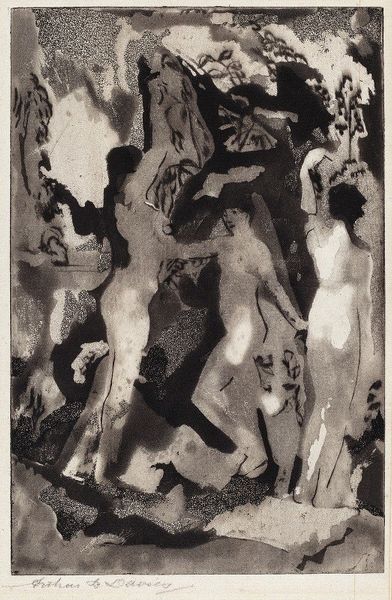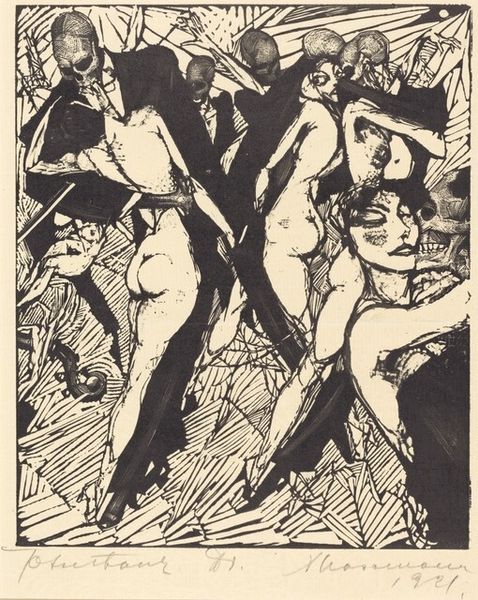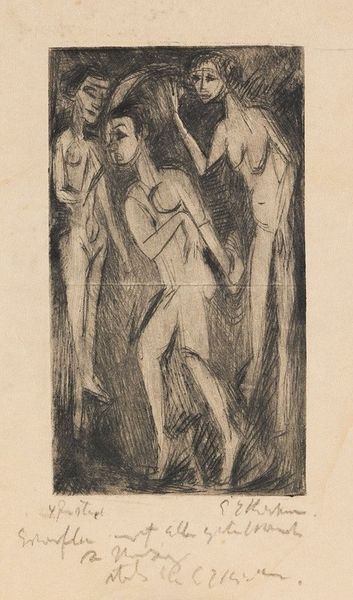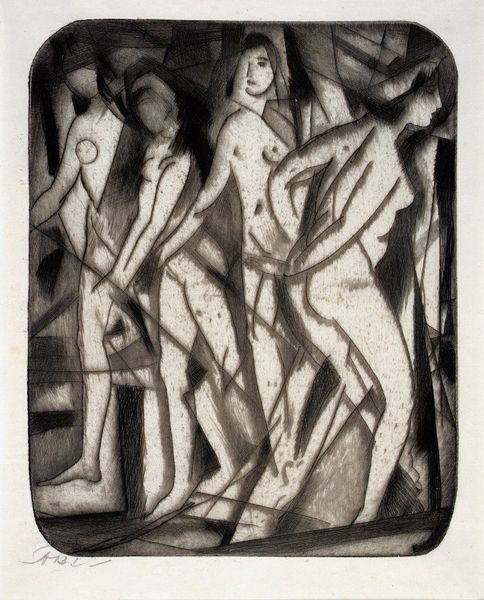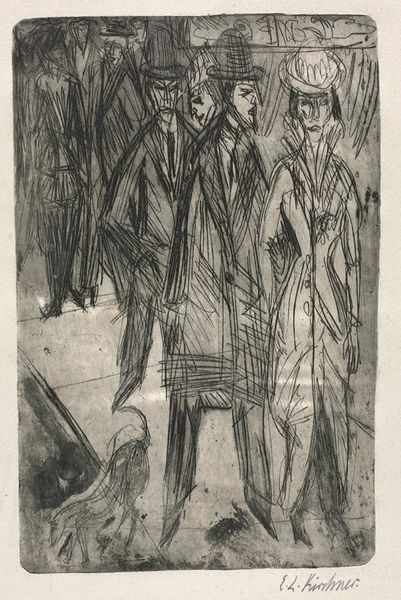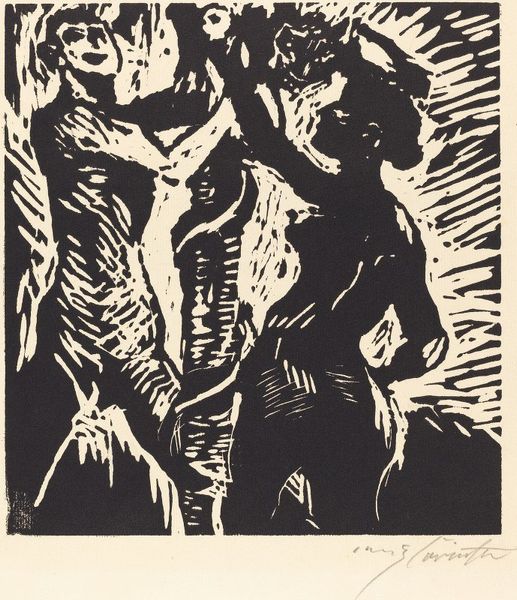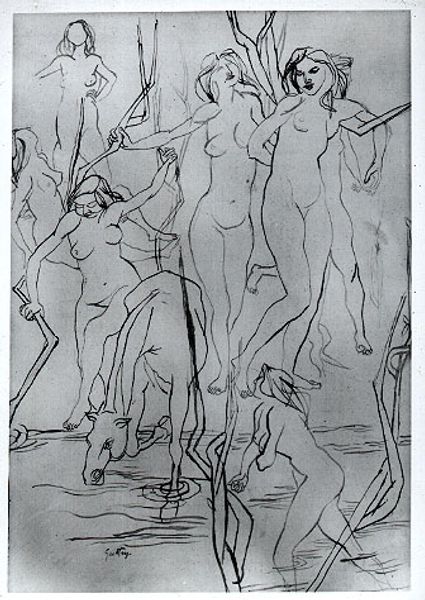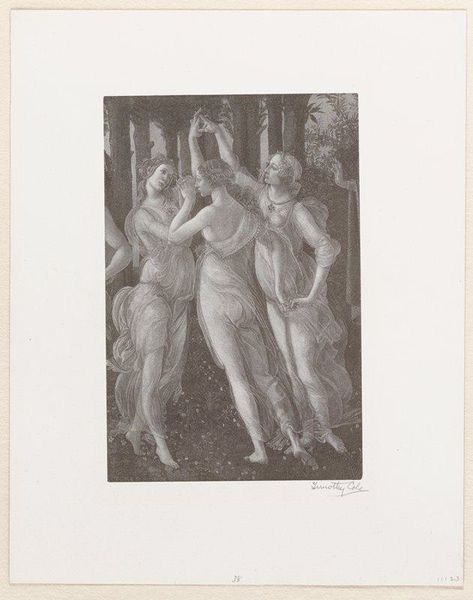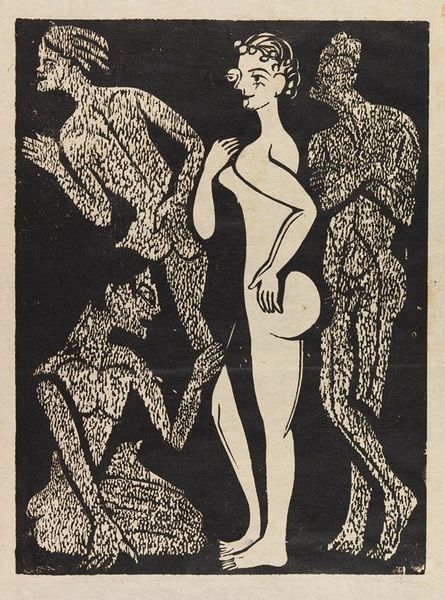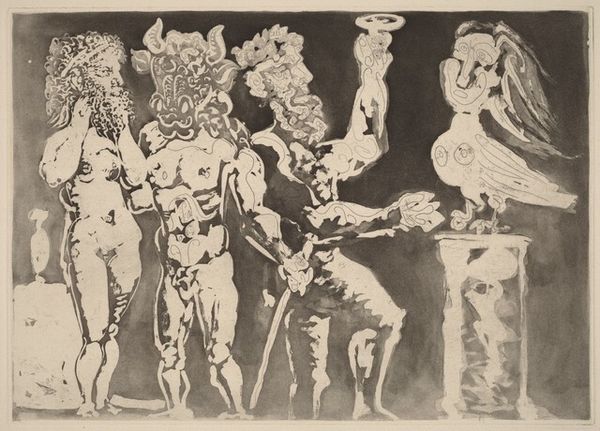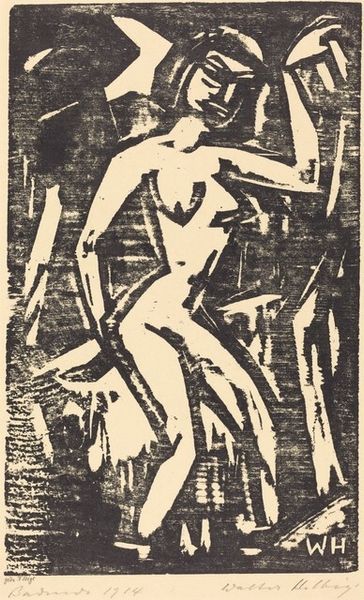
etching
#
art-nouveau
#
etching
#
figuration
#
symbolism
#
nude
#
modernism
Copyright: Public Domain: Artvee
Editor: Arthur Bowen Davies' etching, "Ecstasy," created in 1916, presents three female figures in varying states of undress and what seems like expressive movement. It gives me a sense of hidden freedoms, or perhaps repressed desires bubbling to the surface. How do you interpret this work within its historical context? Curator: Considering the moment of its creation, on the cusp of the modern era, and just before the US entered WWI, I see Davies' "Ecstasy" as speaking to a broader cultural yearning for liberation and emotional intensity. These nude figures, rendered with an almost dreamlike ethereality thanks to the etching medium, recall classical ideals, but they're disrupted. Editor: Disrupted how? Curator: The symbolism is intentionally vague. There's a move away from strict, academic nudes. Davies, as a figure tied to the 1913 Armory Show, contributed to shifting art away from moralistic conventions towards subjective experiences and primal emotions. The figures exist in this strange in-between space: they are idealized nudes but somehow still possess an air of earthly sensuality that departs from academic tradition. Where do you see that tension reflected in its composition? Editor: I think it is apparent in their placement within the shadowy space - it’s like they’re trying to escape, and are being swallowed up all at once. The figures look stuck. The composition could indicate the repression of women. Curator: An insightful connection. Works like these were both pushing boundaries while simultaneously reflecting the continued struggle for self-expression against socio-cultural constraints. It is also hard to ignore that fact that while pushing these boundaries he was not representing reality and continuing the societal construct. Food for thought. Editor: Definitely given me something to ponder regarding how liberation, art, and constraints work together.
Comments
No comments
Be the first to comment and join the conversation on the ultimate creative platform.
